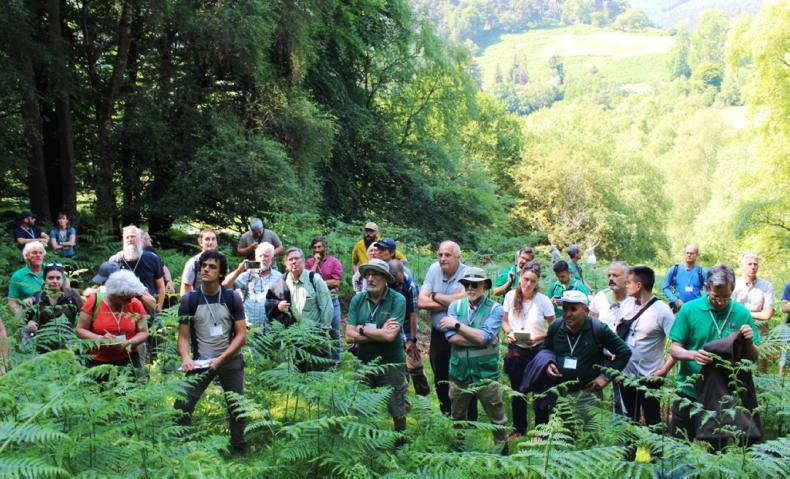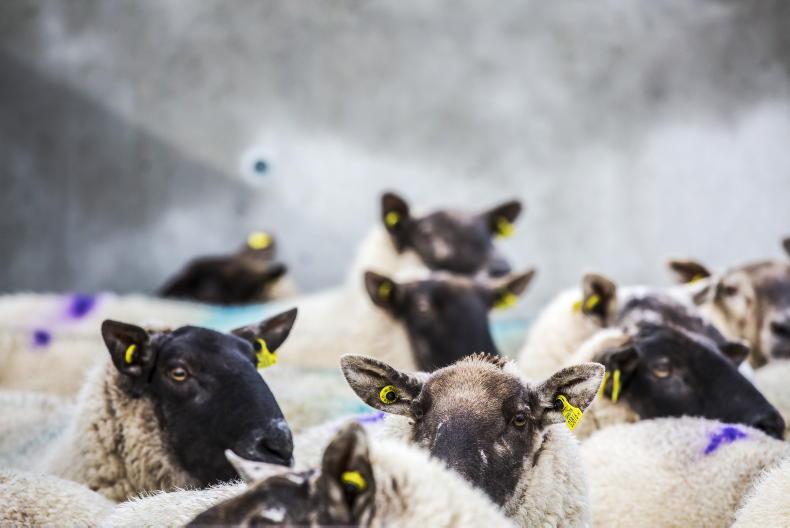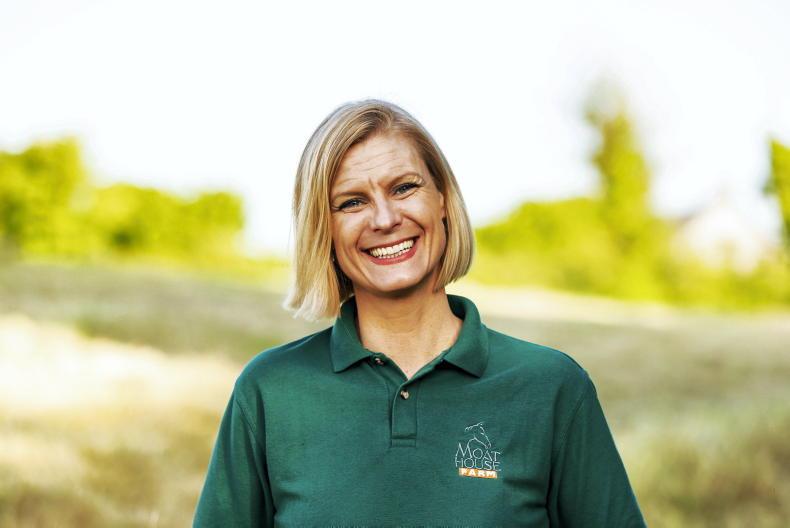Senator Pippa Hackett, Minister of State, launched Pro Silva’s international meeting in Co Wicklow recently. Pro Silva is a European organisation that advocates and promotes continuous cover forestry (CCF).
She told over 100 delegates from 22 European countries that she and her Department fully support CCF research and transformation systems. The three-day meeting, hosted by Pro Silva Ireland, heard presentations by Irish and international researchers, foresters and ecologists, while forest owners and sawmillers contributed to the discussion sessions.
Although forestry practice in Ireland differs from Europe, there are areas of commonality, maintained Eckart Senitza, the Austrian chair of Pro Silva.
“Our forests are being subjected to multiple threats and challenges from the changing climate, the biodiversity crisis, increasing pests and diseases, lack of forest governance, forest abandonment and urban expansion,” he said.
“As the primary knowledge exchange hub for close-to-nature forest management, Pro Silva is now a key stakeholder in the development of forest policy in Europe,” he added.
Liam Byrne, chair of Pro Silva Ireland, added that “there is now a clear demand for an integrated approach to forest management that delivers for industry, the environment and people”. A sawmiller and CCF practitioner himself, he stressed the need for “engagement with forest owners” and to avoid an “elitist or fundamentalist” approach.
The meeting visited Glendalough’s ancient woodlands, as well as a nearby CCF afforestation site. The group explored continuous cover, as practised in private forests in Co Wicklow, such as Ballycullen and Cloragh near Ashford, and Knockrath in the Vale of Clara, between Laragh and Rathdrum.
European delegates were impressed not just with the organisation of the meeting, but also the progress made by Ireland, which is a relative latecomer to CCF. European CCF foresters have been meeting since the 1960s but it wasn’t until 1989 that Pro Silva Europe was founded in Slovenia. Pro Silva Ireland was established 11 years later.
Pro Silva Ireland, has grown from a few early enthusiasts to almost 200 members, comprising foresters, forest owners, ecologists and researchers.

Some of the delegates from 22 European countries in Glendalough, during the recent Pro Silva international meeting. \ Donal Magner
CCF long-term future
CCF projects in Ballycullen and elsewhere, illustrate the need for long-term research. In Ballycullen, there are gaps in funding between the three separate CCF research projects carried out from 2010 to 2022. While the project is secured under the current programme – ContinuFor (2023-2027) – this short-termism is regarded as totally inadequate for a silvicultural sytem that needs at least 50 years to achieve real results.
It requires yield models to ensure that it stands up to production and economic analysis. It needs guidelines on age of intervention, soil and site suitability, species and other factors.
It will also require training and education of foresters, contractors and forest owners, as outlined by Liam Byrne and Jonathan Spazzi, Teagasc forestry adviser and member of Pro Silva. He outlined a range of training courses being developed by Teagasc’s Forestry Development Department.
“These aim to showcase the potential benefits to owners of CCF or close-to-nature management solutions,” he said. “They also explain the range of Department funding available to owners who are considering transforming their forests to permanent and multifunctional forests. “
Minister Hackett on CCF and deer control
In her address to the Pro Silva meeting, Minister Hackett outlined her support for CCF research and “the creation of forests specifically designed and laid out to be managed for quality timber production under established, continuous cover principles”.
She encouraged existing forest owners to transition their forests to CCF, where suitable.
“We offer three payments over a period of 12 years of €1,200/ha and a premium for up to seven years for the management of ecosystem services,” she said.
She acknowledged that deer damage was now a major concern: “The result of a recent online survey shows an overarching consensus that we have too many deer.”
“Last year, we established the Deer Management Strategy Group to develop a set of recommendations to deliver a deer management strategy for Ireland, given the enormous pressure that deer present for CCF forests, forestry and biodiversity in general,” she added. “The steering committee is made up of officials from my own Department, as well as the National Parks and Wildlife Service at the Department of Housing, Local Government and Heritage and Coillte.”
Ballycullen and Cloragh – same goal, but patience required
Foresters and forest owners need patience regardless of the silvicultural regime, but CCF managers need extra patience – and perseverance – to achieve their goals. This was illustrated in Ballycullen and Cloragh forests, where CCF is the preferred silvicultural system.
Cloragh was planted in 1974, although individual species date much further back. Ballycullen, planted 20 years later is at the early stages of transformation, while Cloragh has reached the instantly recognisable CCF stage with its uneven aged trees, rich ground flora and abundance of light reaching the forest floor. It was here that CCF – and Pro Silva Ireland – took root in 2000.
A distance of little more than 2km separates both forests in this richly wooded part of Co Wicklow, including the Devil’s Glen forest and the Vartry River, which slices through Glanmore, now immortalised in Seamus Heaney’s ‘Glanmore Sonnets’ from his collection Field Work.
If ever there was continuous cover territory, this is it. The practice is underway by Coillte in the Devil’s Glen, but Cloragh has had a head start on all CCF forests.
Cloragh: Cloragh transitioned to continuous cover in 2000 when most of the forest was 24 years old. This would be regarded as too late for most forests today, but the site is sheltered and contains free-draining, acid-brown earth mineral soils, so the risk of windthrow is outweighed by the multipurpose CCF benefits. The forest has been naturally regenerating for a number of years. Now almost 50 years old, it is a mixed aged, mixed species forest, containing some trees, which have surpassed 40m top height, with volumes up to 7m3. Ballycullen: The transition to CCF in Cloragh was relatively smooth, but the journey elsewhere faced a number of challenges as outlined by Professor Áine Ní Dhubhain, UCD. After two failures, mainly as a result of transitioning to CCF too late, UCD chose Ballycullen, which was approaching first thinning when CCF research began in 2010. This phase lasted until 2014, while the second phase (2017-2022), led by Teagasc and UCD, continued the study under the guidance of Ted Wilson, then a Walsh Scholar in Silviculture. He is finalising his PhD at UCD based on research carried out on the transformation of the forest to CCF “using three thinning regimes – low, crown and graduated density thinning”. These thinnings were taken in 2011, 2014, 2019 and 2023. Ballycullen is slowly, naturally regenerating, although the seedlings are barely visible and there is little colonisation of vegetation. At this stage, it is difficult to see how this pure Sitka forest will match Cloragh in the coming years, but Wilson is confident that it will. Liam Byrne, who has seen Cloragh transform to a mixed species forest, agrees.
Senator Pippa Hackett, Minister of State, launched Pro Silva’s international meeting in Co Wicklow recently. Pro Silva is a European organisation that advocates and promotes continuous cover forestry (CCF).
She told over 100 delegates from 22 European countries that she and her Department fully support CCF research and transformation systems. The three-day meeting, hosted by Pro Silva Ireland, heard presentations by Irish and international researchers, foresters and ecologists, while forest owners and sawmillers contributed to the discussion sessions.
Although forestry practice in Ireland differs from Europe, there are areas of commonality, maintained Eckart Senitza, the Austrian chair of Pro Silva.
“Our forests are being subjected to multiple threats and challenges from the changing climate, the biodiversity crisis, increasing pests and diseases, lack of forest governance, forest abandonment and urban expansion,” he said.
“As the primary knowledge exchange hub for close-to-nature forest management, Pro Silva is now a key stakeholder in the development of forest policy in Europe,” he added.
Liam Byrne, chair of Pro Silva Ireland, added that “there is now a clear demand for an integrated approach to forest management that delivers for industry, the environment and people”. A sawmiller and CCF practitioner himself, he stressed the need for “engagement with forest owners” and to avoid an “elitist or fundamentalist” approach.
The meeting visited Glendalough’s ancient woodlands, as well as a nearby CCF afforestation site. The group explored continuous cover, as practised in private forests in Co Wicklow, such as Ballycullen and Cloragh near Ashford, and Knockrath in the Vale of Clara, between Laragh and Rathdrum.
European delegates were impressed not just with the organisation of the meeting, but also the progress made by Ireland, which is a relative latecomer to CCF. European CCF foresters have been meeting since the 1960s but it wasn’t until 1989 that Pro Silva Europe was founded in Slovenia. Pro Silva Ireland was established 11 years later.
Pro Silva Ireland, has grown from a few early enthusiasts to almost 200 members, comprising foresters, forest owners, ecologists and researchers.

Some of the delegates from 22 European countries in Glendalough, during the recent Pro Silva international meeting. \ Donal Magner
CCF long-term future
CCF projects in Ballycullen and elsewhere, illustrate the need for long-term research. In Ballycullen, there are gaps in funding between the three separate CCF research projects carried out from 2010 to 2022. While the project is secured under the current programme – ContinuFor (2023-2027) – this short-termism is regarded as totally inadequate for a silvicultural sytem that needs at least 50 years to achieve real results.
It requires yield models to ensure that it stands up to production and economic analysis. It needs guidelines on age of intervention, soil and site suitability, species and other factors.
It will also require training and education of foresters, contractors and forest owners, as outlined by Liam Byrne and Jonathan Spazzi, Teagasc forestry adviser and member of Pro Silva. He outlined a range of training courses being developed by Teagasc’s Forestry Development Department.
“These aim to showcase the potential benefits to owners of CCF or close-to-nature management solutions,” he said. “They also explain the range of Department funding available to owners who are considering transforming their forests to permanent and multifunctional forests. “
Minister Hackett on CCF and deer control
In her address to the Pro Silva meeting, Minister Hackett outlined her support for CCF research and “the creation of forests specifically designed and laid out to be managed for quality timber production under established, continuous cover principles”.
She encouraged existing forest owners to transition their forests to CCF, where suitable.
“We offer three payments over a period of 12 years of €1,200/ha and a premium for up to seven years for the management of ecosystem services,” she said.
She acknowledged that deer damage was now a major concern: “The result of a recent online survey shows an overarching consensus that we have too many deer.”
“Last year, we established the Deer Management Strategy Group to develop a set of recommendations to deliver a deer management strategy for Ireland, given the enormous pressure that deer present for CCF forests, forestry and biodiversity in general,” she added. “The steering committee is made up of officials from my own Department, as well as the National Parks and Wildlife Service at the Department of Housing, Local Government and Heritage and Coillte.”
Ballycullen and Cloragh – same goal, but patience required
Foresters and forest owners need patience regardless of the silvicultural regime, but CCF managers need extra patience – and perseverance – to achieve their goals. This was illustrated in Ballycullen and Cloragh forests, where CCF is the preferred silvicultural system.
Cloragh was planted in 1974, although individual species date much further back. Ballycullen, planted 20 years later is at the early stages of transformation, while Cloragh has reached the instantly recognisable CCF stage with its uneven aged trees, rich ground flora and abundance of light reaching the forest floor. It was here that CCF – and Pro Silva Ireland – took root in 2000.
A distance of little more than 2km separates both forests in this richly wooded part of Co Wicklow, including the Devil’s Glen forest and the Vartry River, which slices through Glanmore, now immortalised in Seamus Heaney’s ‘Glanmore Sonnets’ from his collection Field Work.
If ever there was continuous cover territory, this is it. The practice is underway by Coillte in the Devil’s Glen, but Cloragh has had a head start on all CCF forests.
Cloragh: Cloragh transitioned to continuous cover in 2000 when most of the forest was 24 years old. This would be regarded as too late for most forests today, but the site is sheltered and contains free-draining, acid-brown earth mineral soils, so the risk of windthrow is outweighed by the multipurpose CCF benefits. The forest has been naturally regenerating for a number of years. Now almost 50 years old, it is a mixed aged, mixed species forest, containing some trees, which have surpassed 40m top height, with volumes up to 7m3. Ballycullen: The transition to CCF in Cloragh was relatively smooth, but the journey elsewhere faced a number of challenges as outlined by Professor Áine Ní Dhubhain, UCD. After two failures, mainly as a result of transitioning to CCF too late, UCD chose Ballycullen, which was approaching first thinning when CCF research began in 2010. This phase lasted until 2014, while the second phase (2017-2022), led by Teagasc and UCD, continued the study under the guidance of Ted Wilson, then a Walsh Scholar in Silviculture. He is finalising his PhD at UCD based on research carried out on the transformation of the forest to CCF “using three thinning regimes – low, crown and graduated density thinning”. These thinnings were taken in 2011, 2014, 2019 and 2023. Ballycullen is slowly, naturally regenerating, although the seedlings are barely visible and there is little colonisation of vegetation. At this stage, it is difficult to see how this pure Sitka forest will match Cloragh in the coming years, but Wilson is confident that it will. Liam Byrne, who has seen Cloragh transform to a mixed species forest, agrees.










SHARING OPTIONS